#i challenge you to name one mainstream Indian superhero
Photo

Dunkirk (2017)
In 1415, King Henry V led a vastly outnumbered English army to a shock victory against the French at Agincourt, located in Northern France, as part of the Hundred Years’ War. For centuries, Agincourt became a famous rallying point for the English, popularized in William Shakespeare’s 1599 historical play Henry V. More than a half-millennium later just north of Agincourt, British troops – with the union between England, Scotland, Wales, and Northern Ireland occurring since the Battle of Agincourt – found themselves yet again in a desperate situation on French soil. Their enemy this time would be Nazi Germany, and, like in 1415, the British would be seemingly hopeless, outnumbered. Along with the Belgians, French – or what was left of the French army – Dutch, Poles, and Indian troops, Dunkirk would be the final part of Allied Western Europe to fall to the Axis, and, following the evacuation of thousands of British troops across the English Channel, the beginning of the Battle of Britain.
For a summertime release these days, a historical drama war movie is a non-starter among major Hollywood studio producers opting for supposedly safer action/adventure and superhero franchises. But for better and for worse, Christopher Nolan (a director whose skills I admire, nothing more) is not your average filmmaker, as he – with the financial success of his Dark Knight trilogy and Inception (2010) – faces some of the least corporate resistance to any of his planned projects. Dunkirk might appear to be Nolan’s most conventional film, to date, without close inspection, but its triptych structure successfully integrates the director’s fracturing of time. Is Nolan’s time-bending necessary? I am not convinced that it is because these decisions complicate any viewer’s efforts to emotionally connect to the characters (Nolan’s defenders who say that emotional manipulation is antithetical to a movie’s success are rejecting a cornerstone of narrative cinema). But Nolan has pursued this path, and he does well in spite of one of the more calamitous film scores in Hans Zimmer’s career.
Dunkirk’s nonlinear structure is divided into three: by land, by sea, and by air. All of its characters are fictional. On land, a private named Tommy (Fionn Whitehead) has just barely escaped incoming Germans and found his way onto Dunkirk’s beaches. There, he meets a French soldier disguising himself as a British private named “Gibson” (Aneurin Barnard) and another private, Alex (Harry Styles). Commander Bolton (Kenneth Branagh, a composite character) and Colonel Winnants (James D’Arcy) are coordinating evacuations from the beach. By sea, the Royal Navy is commandeering civilian vessels across the English Channel to expedite the evacuation. Among those civilians are Mr. Dawson (Mark Rylance), his son Peter (Tom Glynn-Carney), and Peter’s friend George (Barry Keoghan). They will later pick up a soldier (Cillian Murphy, credited as “Shivering Soldier”). In the air, three Royal Air Force (RAF) pilots –Farrier (Tom Hardy; yet again in a role concealing his face and with minimal dialogue), Collins (Jack Lowden), and “Fortis Leader” (voiced by Michael Caine, never shown) are headed towards France to serve as air support.
It should be noted that these three sections are also given titles in the opening minutes. The first, by land, is entitled “The Mole”. “Mole”, in this case, refers to a lengthy solid barrier on a shore serving as pier or breakwater (it is not referring to a spy). This befuddled me for about the first twenty minutes, so I hope this clarifies things for anyone still confused about whether or not there was a German agent in Dunkirk. In another historical note, the Germans – though surrounding the Allied troops at Dunkirk – never moved in for the fatal blow. Historians dispute the reasons why the Germans halted their advance, but it appears that Hitler believed that, once the British fled from continental Europe, they would never dare mount a cross-Channel invasion.
Nolan, who wrote the screenplay, has longed tinkered with linearity – especially in Memento (2000). His editor, Lee Smith, has been collaborating with him since Batman Begins (2005). With the screenplay’s structure married to what needs to be a keen editing sense, Nolan becomes less interested in documenting the actual events and the historical intricacies than he is intensifying the suspense. This is not The Longest Day (1962) or Tora! Tora! Tora! (1970) where the filmmakers emphasize the decisions of generals while cross-cutting with frontline combat of the soldiers involved. This is not Saving Private Ryan (1998) or Wings (1927) where the focus is on individual, fully characterized soldiers bearing the horrific brunt of combat. Because of this, Dunkirk becomes less of a war film than it is a cross-stitch of the disaster and thriller subgenres. As fascinating as this approach is, it has its share of problems – even though Dunkirk is more understandable than most other Nolan films.
That lack of distinctive characters becomes irritating after a while. If you permit a brief aside, I am sometimes told by friends – of, like yours truly, Asian descent – that the statement that, “all Asians look the same” is offensive. My dirty secret is, I tend to agree that Asian people look the same as I live in an Asian-American plurality community (or maybe it’s because I’m terrible at faces, because I tend to think that a lot of white people look the same, too). The numerous, young white men with brown hair often wearing helmets or flight masks alongside their attractive cheekbones begin to merge into one after a while – with exceptions to Rylance and Branagh, because they are the most established actors working in this movie. With the exception of One Direction fans, can you tell the difference between Aneurin Barnard and Harry Styles in the provided pictures? If you can, maybe you should be a police detective. Having already been challenged by Nolan’s temporal experimentation – at least, within the confines of what a major Hollywood studio will permit – this is an unnecessary hindrance to understanding the event on-screen. I understand that Nolan intended these characters to be blank slates for the audience to project their thoughts onto the images onscreen.
Because of that, this movie will be playing quite differently to those who have a closer connection to the events surrounding World War II, as well as any type of military service. I profess to being a WWII movie buff, yet a pure war movie – this excludes war prison movies like The Great Escape (1963), wartime/post-war dramas like Grave of the Fireflies (1988, Japan), and war romances like Casablanca (1942) – has never moved me to tears. Perhaps that is because of my personal disconnect from military operations and culture. As such, that probably explains my muted reaction compared to others. I found myself flinching as bullets ricocheted or pierced through metal, as well as staring widely in terror at the screen during the flying sequences. But being stirred by the desperation and the events unfolding in the film? That has never happened (I trust my emotions enough to make such a judgment).
Water, fire, smoke, sand, foam, and clouds are all elements that Nolan and cinematographer Hoyte van Hoytema use to chilling effect. As the ensemble cast of characters immerse themselves into the action, they become lost into the overcast tinderbox of this operation, and one begins to sense the confusion that war brings. It is the fog of war, in other words, and the fear comes from what cannot be seen. Hoytema’s cinematography here – compared to almost every mainstream movie release audiences are bound to see this year – is frequently grounded in something or someone outside the frame. Perhaps it’s a plane, an enemy soldier (the only time Dunkirk depicts a German soldier is for a select few seconds in the final minute – this is not a film interested in humanization on either side, really), an incoming torpedo. Not until recently have Nolan’s films been as visually interesting as they should be, and the decision to let the camera linger in moments is a long-delayed feature. Unfortunately, this strategy only shows how terribly small this production is compared to past epics – when Commander Bolton proclaims there are tens of thousands of soldiers on the beaches of Dunkirk, we can clearly see that is not the case. The numbers are not convincing, perhaps more appropriate for a film about long lines and crowds at an amusement park than one of the largest evacuations in human history.
Dunkirk was intended for an IMAX screen, and, at the height of the film’s release, thirty-one theaters in North America showed Dunkirk in its intended IMAX 70mm release (for a primer to the screen aspect ratios of industry standard films, 70mm film, and IMAX 70mm, consult this guide – warning: not every IMAX theater is “true IMAX”). With three-quarters of Dunkirk shot in IMAX 70mm, the widest shots will seem constricting because of the blocky shape of the print. When reverting to regular 70mm film, Dunkirk is letterboxed in a format familiar to those who have seen the select few films that have been shot in 70mm: Ben-Hur (1959), My Fair Lady (1964), The Sound of Music (1965), Patton (1970), The Hateful Eight (2015), and others.
Dunkirk was also shot on traditional film, not with digital cameras that has become the industry standard worldwide – film is considered more “prestigious” and “weighty” than the cleanliness of the digital format, analogous to the reasons why music aficionados might prefer to listen to vinyl records rather than compact discs and digital formats. So that means, in theatrical screenings, the print will have crackles of black spots that appear across the screen for a split-second at a time and there will be a faint flickering effect present. Film – due to its very imperfections – also tends to make any CGI effects (which were minimized for Dunkirk as real war ships and airplanes were used) appear to be practical effects.
Not nearly as practical, perhaps even painful, is composer Hans Zimmer’s thunderous, pathetic film score – which I have to spend more time writing about than I would like to, but alas. His compositions, largely based on Nolan’s ticking pocket watch, are attuned to the urgency of the situation and how the director manipulates time. Zimmer and his music production company, Remote Control Productions, have almost monopolized film scores to major studio productions, leading to the epidemic of melody-less music and harmonic shallowness – could you sing five themes from action/adventure and superhero movies in the last ten years? – in favor of rhythm and an integration with the sound mix. Zimmer’s music is a screaming, aggressive, extended masturbatory reflex of tension without resolution. It is a thoroughly unpleasant experience, as most evident in “Supermarine” – which plays over the dogfights in the air. Sounds crash together, the stopwatch’s ticking reverts to a synthesized metronome set to explode your ear drums, and somehow it’s the second-best cue in the film. The score is played ad nauseam, to the point where one has to ask: “Can so-and-so scene operate better if there was no music at all?” My unfortunate answer to that rhetorical question is that, in too many moments, the music was not necessary to build tension (where Nolan is lacking in conveying the lethal speed of the airplanes, he certainly portrays the instantaneous dangers of these battles), and too often is a distracting blare in a beautifully-crafted movie.
The best cue in the film is not even written by Zimmer, but arranged by one of his ghostwriters, Benjamin Wallfisch, and taken so shamelessly from Sir Edward Elgar’s “Nimrod” from the Enigma Variations, that it makes little sense why Elgar’s composition could have been presented without electronic modification. The cue is entitled, “Variation 15″, as if this score wasn’t recklessly ballsy enough and as respectful as DJ Tiesto’s take of Samuel Barber’s “Adagio for Strings”. For the British, Elgar’s pieces are fixtures of their culture. Elgar’s Enigma Variations – “Nimrod” in particular – is played during national holidays, celebrations (the 2012 Summer Olympics Opening Ceremony) Remembrance Sunday (the British Commonwealth’s equivalent to the United States’ Veterans Day), and state funerals and memorial services. When “Nimrod” appears in the concluding minutes of Dunkirk, it comes as a shocking relief when following the electronic madness of what followed before it.
It is a composer’s job to craft a score that services a film and, with luck, that score will have a life of its own outside the context of the film. That is not the case here on at least the latter count, and the music that emanates from Dunkirk is partly Hans Zimmer’s responsibility. Christopher Nolan is dually responsible. After several collaborations with Zimmer, I am beginning to believe that Nolan doesn’t understand what music (recognizable melodies, complicated harmonies of various voices – not just rhythms) can do for his movies – how it can enthrall, move hearts and minds, and allow audiences to understand otherwise inaccessible characters and ideas. Those directors aspiring to be the next Christopher Nolan are emulating their hero. Zimmer, with his music production company, is a fixture of mainstream Hollywood now. The many composers – uncredited ghostwriters and otherwise – working under Zimmer have, like those directors looking up to Nolan, mimicked his rejection of melodic themes and his experimentation with time and sound mixing. Dunkirk’s film score is an attempt at musical innovation that is instead deafening tommyrot.
Within Dunkirk’s two-hour runtime is a linear narrative that wants to enrapture audiences in emotions other than excitement or the frequent flinching after a gunshot or bombing. Even with Hans Zimmer’s score, this is as crisply-made as a war movie can be. Christopher Nolan is a fine director in his own right, but he can only appeal to the enormity of things – evasive maneuvers in the wild blue yonder, fleets of ships to the rescue, sequences of extras that visually recall the greatest silent films (especially 1928′s The Crowd) ever made. When it comes the privacy of what individuals are thinking and how they feel in times distressed and desperate, he is lost at sea.
My rating: 8.5/10
^ Based on my personal imdb rating. Half-points are always rounded down. My interpretation of that ratings system can be found here.
#Dunkirk#Christopher Nolan#Fionn Whitehead#Tom Glynn Carney#Jack Lowden#Harry Styles#Aneurin Barnard#James D'Arcy#Barry Koeghan#Kenneth Branagh#Cillian Murphy#Mark Rylance#Tom Hardy#Hoyte van Hoytema#Lee Smith#Hans Zimmer#My Movie Odyssey
4 notes
·
View notes
Text
10 best movies of 2016!
Seems just about a right time to talk about movies.
2016 was a bit underwhelming but hey! We all love the movies and some of them in this past year where worthy of a celebration.
So, a regional Indian movie (Not Sairat) and a South Korean masterpiece have cropped up this time in my list.
Here are my 10 best movies of 2016:
10. Patterson

A poised observation of the little things in our routine lives. A tale of defeats and triumphs as the day goes by. And some beautiful poetry along the way makes this effort a wonderful piece of art. “Adam Driver” gave a performance worthy of challenging even the likes of Denzel Washington and Casey Affleck but guess what, he was not even nominated for an Oscar.
9. Thithi (English: Funeral)
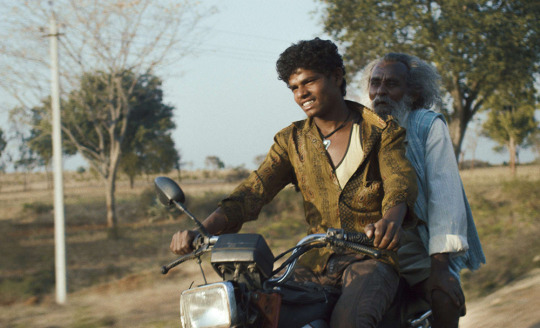
Thithi (English: Funeral) is a 2016 Indian Kannada drama film co-written and directed by Raam Reddy. A wizened old man, over a hundred years and counting, suddenly keels over and dies. And sets into motion an absurdist comedy of manners which uses death to make gentle yet stinging points about life. Consisting of a cast of non-professional actors from a village in Karnataka this is India’s finest movie of 2016. Now available online with subtitles.
8. Arrival
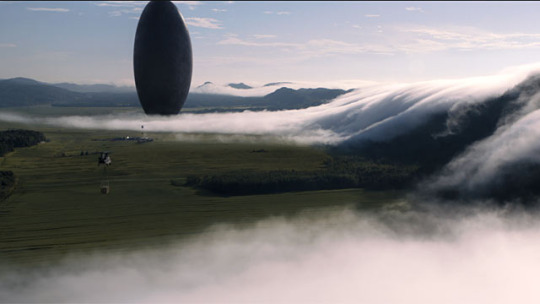
There is no thought without expression. An idea however profound it seems to you does not really exist until you can write it down or in some cases put in on film. Denis Villeneuve’s latest effort is highly effective and impactful by focusing on the very thing that affects and impacts us - Language.
The ability to put forward an idea that “The future can influence the past” and to have the skill and craft to put it on film is heavenly. This is Denis Villeneuve’s finest effort and he already has “Prisoners”, “Incendies”, “Enemy”, “Sicario” on his CV to name a few.
The movie bends time and isn’t linear. You only learn this at the very last scene. This itself should be reason enough to watch this.
7. Green Room
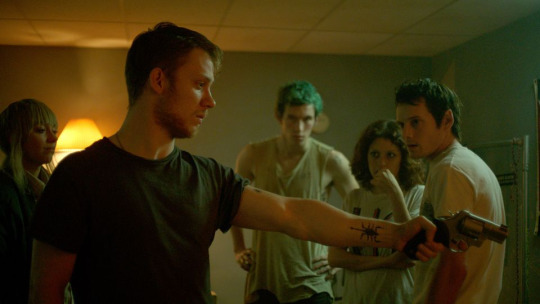
A punk rock band is forced to fight for survival after witnessing a murder at a neo-Nazi skinhead bar and the further the film progresses the more your nails get bitten. Well, need any more motivation??
It starts the supremely talented “Imogen Poots”. :)
Just drop everything and watch this mad mad effort put on film.
6. Ahgassi (English - The Handmaiden)

Park Chan-wook’s The Handmaiden is a must-see, at least for those who don’t mind a little graphic violence and kinky sex to go with their misdirection. The extreme South Korean director of ‘Oldboy’ and ‘Stoker’ has made a love story, one where the lovers aren’t related or vampires or anything! To get to it, you just have to peel back all the layers of deception, just like the characters do.
Available online with subtitles.
5. Manchester By The Sea
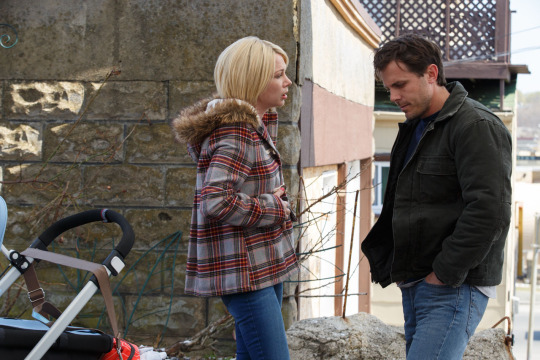
Firstly, this is a horribly depressing movie.
I repeat, this is a horribly depressing movie.
But Kenneth Lonergan deals with the topic of grief is such a sublime manner that you are bound to remain invested in this one. Finest screenplay of 2016 with Oscar worthy performances from both Casey Affleck and Michelle Williams. Thankfully, Oscars got one of them right. Casey is stupendous on screen dealing with grief and loss.Michelle Williams deserved an Oscar for this scene alone (Refer pic above). It’s very hard not to break down during this scene or many others in the movie.
Manchester by the sea is a lot like unrequited love - Depressing but gorgeous.
4. La La Land
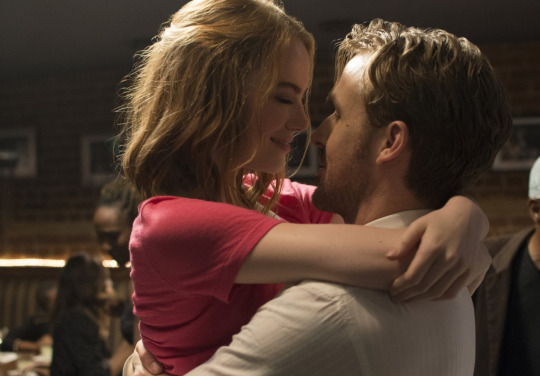
Just go watch this for the finest opening scene to any movie ever. Period.
Then go watch this for everything that follows. Magical stuff from Damien Chazelle (Whiplash fame). Absolutely magical.
Music, dance, dreams, love and Emma Stone. <3
A combination that only can be seen at the movies.
A combination to cherish.
3. Frank & Lola

A psychosexual damaged love story, set in Las Vegas and Paris, about love, obsession, sex, betrayal, revenge and, ultimately, the search for redemption.
Michael Shannon is world class. And well, the supremely talented “Imogen Poots” gives a Oscar worthy performance and well! She wasn’t even nominated.
A story that puts love in its most damaged form and excels.
2. Forushande (English - The Salesman)
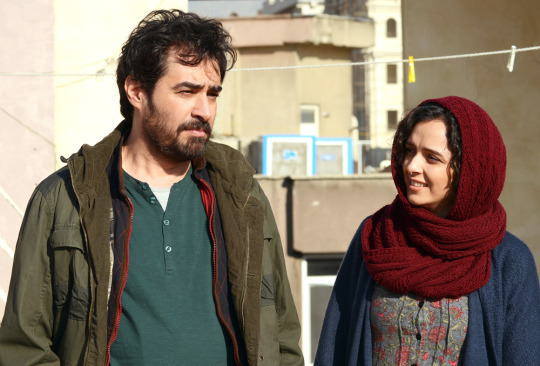
No one better than Asghar Farhadi to depict human relationships on screen. Rightfully won the Oscar for the best Foreign film.
This guy from Iran just keeps getting better.
This movie will strangle you but keep your pulse just enough for you to suffer.
1. Deadpool
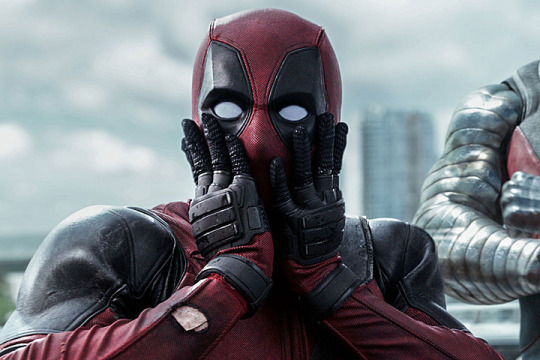
If I had to pick one mainstream movie that did not disappoint, and in fact delivered much more entertainment than I expected, it would be the hilariously potty-mouthed Deadpool. The film beautifully roasted all the clichés of superhero movies and was a fresh new addition to the increasingly decaying genre.
Easily the finest movie of 2016.
Notable mentions: I’m Not A Serial Killer , Elle
1 note
·
View note
Text
Hyperallergic: “The World You’re Crafting Isn’t in a Vacuum”: A Zimbabwean Comics Artist on Social Justice and Storytelling
Cover of the upcoming ‘Razor-Man 5’ (all images courtesy of Bill Masuku)
Over the past few years, the Zimbabwean comic industry has grown significantly. In 2015, an artist collective called Comexposed launched Zimbabwe’s first-ever comic book convention. According to TechZim, it “highlighted the animation talent in the country and shed some light on the burgeoning local comic industry.” Since then, Comexposed has held multiple comic book events. Speaking at Comexposed 2016, co-founder Eugene Mapondera said that the event showed how the local comic industry has grown rapidly since the event’s inception.
Most of the international comic community hasn’t yet recognized the cultural and political importance of the Zimbabwean comic scene. Despite this, Zimbabwe — which has been described as a “great comic book incubator” — continues to produce talented artists like Bill Masuku.
Masuku is fast becoming one of the most well-known comic artists in Zimbabwe. He, along with the well-known Zimbabwean graphic artist Dananayi Muwanigwa, created a popular character named Black Zeus. Masuku went on to create the character Razor-Man, and that series, along with his other comics, are now being produced by Enigma Comix Africa, a subsidiary of Sigma-Digital Studios. Razor-Man debuted and then sold out at Comexposed’s Comic Book Day in 2016. Masuku is currently working on the fifth comic in the Razor-Man series as well as a superhero comic called Arcadia Knights. He’s also collaborating with Amanda Chaniwa on Drama Mama, a slice-of-life comic about five women experiencing life after high school.
Masuku has a consistent ability to combine beautiful line work, witty writing, and socially aware storylines to create entertaining work that pulsates with political themes. I spoke to him about his work, his social commentary, and the nature of the comics scene in Zimbabwe.
* * *
Bill Masuku at Harare LitFest, 2016, photo by Susanna Sacks
Let’s start at the beginning: How did you get into creating comics? What attracted you to the medium?
I started drawing comics when I was in Grade 5 [age 11]. I really enjoyed it. Books are great, but they only give half a story. They don’t always convey what the author envisions. When I first read Harry Potter, for example, Hermione was definitely black in my mind, so it was quite a shock to see her as white in the movie. Comics prevent that issue because they’re both written and visual, and I was attracted to the union between those two forms of storytelling.
One of the biggest challenges was that the access to comics in Zimbabwe was nearly nonexistent. It was only much later in my life that I actually got to hold a comic book and look at how it’s done from start to finish.
Has the accessibility of comics changed since you were younger? Why do you think it’s important that young people in Zimbabwe have access to these books?
There are small bookshops that are importing more international content, and we, the local creators, are trying as much as we can to put out the books into as many places as possible. It’s something that the entrepreneurs of the comic book industry are working toward. One of our mandates is to get as many of our books into as many people’s hands as possible.
Having access to things like comic books is super important for younger people. The adult literacy rate in most African countries is really low, and maybe it’s because of access to books themselves. But it’s definitely crucial to be able to get someone interested in reading early, to get them to want to learn more, to read more, to be literate.
From ‘Razor-Man 5’
Your comics explore a lot of social justice issues. How do you think comics enable us to explore these issues in a way that other mediums might not?
I think when it comes to social justice issues, when I’m writing my comics, the four main ones I focus on are race, gender, class, and ableism. The term “tokenism” has developed because there’s not enough diversity in general media, and I think to balance that, as a writer, you need to be aware that the world you’re crafting isn’t in a vacuum. We need to have more people of color representing themselves, just not in isolation. Or rather, not having them represent an entire race on their own. Black characters in mainstream comic-book movies often provide comic relief or some type of singular characteristic that forms a blanket representation of the entire race or culture.
On the point of gender, women characters are often represented as damsels in distress or as eye candy. We only see one type of women’s body, or one kind of female character. There’s an entire spectrum of body shapes, characterizations, and sexualities and genders that aren’t shown in mainstream media.
I think the nature of comics is to be political, to push boundaries, and to broadcast ideas. To be able to send a message while still being entertaining is definitely one of the major reasons why comic books still flourish today.
From ‘Arcadia Knights’
We’ve spoken before about how being Zimbabwean means you face a lot of specific challenges when it comes to making your work visible. International publications tend to say that your work is too niche — despite the fact that they regularly publish articles about similar artists in the United States.
Yeah, there are definitely some socioeconomic differences between creating here and creating overseas, or even farther north in Africa. One example is Roye Okupe, who’s Nigerian. For his comics, he launched a Kickstarter, which immediately gave him a much wider visibility because of the nature of the platform. He’s able to crowdfund, so he doesn’t have to take out a loan or find another job to be able to make comics. And that same statement applies overseas, where comic artists can find more visibility. Because of economic sanctions, Zimbabwean artists can’t use services like PayPal or Kickstarter. Those two points — funding and visibility — are both major hurdles in garnering more interest and being able to push more production out.
Many artists have used comics to talk about social issues. For example, Hyperallergic has covered Joy Brabner, Palestinian artist Leila Abdelrazaq, and the comics newspaper RESIST!, which was recently distributed at the Women’s March in the US. Why do you think it’s important that we have Zimbabwean comic books specifically? How can Zimbabwean artists address the social issues Zimbabweans face in a way international artists can’t?
It all comes back to context. Because of intersectionality, race, gender, and class are all big things that affect us globally. But then colorism, tribalism, and the intricacies of intersectionality come into play when you’re in a different socioeconomic location, or even just a different geographical location. As a writer, it’s crucial to be able to raise awareness about these issues at home. For example, there’s no one talking about being gay in a country where that’s illegal, and what actually happens to you when you come out to your parents. When someone who is not from here [writes about that], they’ll miss the subtle nuances that make the issue relevant to someone who is here and going through it. Having an open-minded writer who talks about these issues creates hope for the reader.
From ‘Razor-Man 5’
What are you working on at the moment, and how does it tie into those issues?
The two big projects I’m working on are Razor Man and Arcadia Knights. The Razor Man comic focuses on the Zimbabwean idea that no matter your situation, you can “make a plan.” Every Zimbabwean knows that catchphrase. It reflects the idea that no matter how bad things get, you’ll make it to the other side. Arcadia Knights is a team superhero book about people who just found themselves with powers. They’re not super buff, they’re not scientists, they’re not billionaires, and they’re not experts in their fields — they’re just regular people who ended up with powers. It’s going to be one of my most diverse projects so far. There’s a young Indian girl, there’s a black guy who’s struggling with class issues, there’s a girl who’s struggling with eating disorders, but it actually leans into one of her powers. I’m more excited for Arcadia Knights than Razor Man, despite Razor Man being more popular at the moment.
Razor-Man 5 is now available from Enigma Comix Africa.
The post “The World You’re Crafting Isn’t in a Vacuum”: A Zimbabwean Comics Artist on Social Justice and Storytelling appeared first on Hyperallergic.
from Hyperallergic http://ift.tt/2nxpK6W
via IFTTT
0 notes